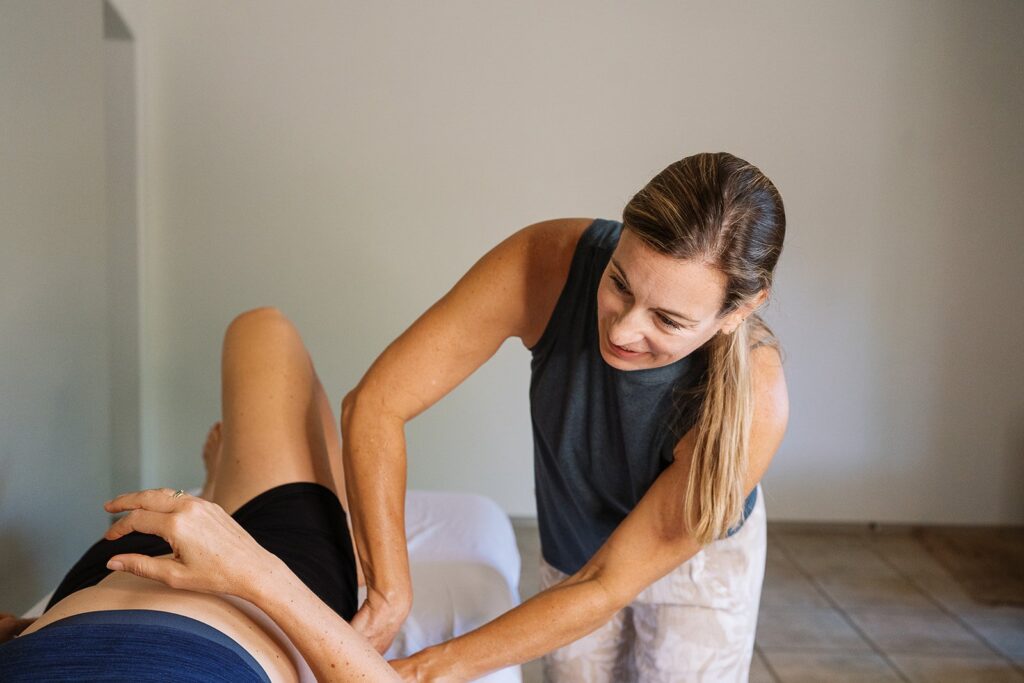Posted: April 10, 2025 | Aimee Baker, PT, MFR, RPT | Lake Orion, MI
Understanding Overuse Injuries
When it comes to releasing muscle tension and lengthening tight tissues, the secret isn’t always in working harder—it’s in working longer. Science, particularly in the field of myofascial release (MFR), shows that applying pressure into a fascial restriction for a prolonged period of time can produce sustained results compared with temporary results from soft tissue mobilization, massage or manipulation.
John F. Barnes, PT is considered a pioneer in the field of Myofascial Release Technique and has been teaching these principles to thousands of doctors and therapists for the past 50 years. Let’s dive into the evidence behind this approach and explore how it can transform your body’s mobility, strength and overall health.
The Science of Muscle Length
Muscles are completely surrounded by a tough connective tissue called fascia. Fascia surrounds every cell, in every structure of the body, creating a continuous three dimensional web. Overuse, injury and chronic postural holds are many of the things that can cause fascia to tighten and, in turn, bind around the muscle, nerves and surrounding structures. Over time, as the fascia tightens it can bind with up to 2000 pounds per square inch of pressure causing pain, decreased movement and decreased performance. Traditional “stretching”, soft tissue mobilization, massage or manipulation might take care of the problem temporarily but they have no lasting effect on the fascial system. Here’s where longer holds come in.

- Viscoelastic Properties of Fascia
Fascia is viscoelastic, meaning it has both viscous (fluid) and elastic (springy) qualities. Research shows that applying sustained pressure and stretch into the fascial restriction–usually for several minutes–allows fascia to transform, release and rehydrate. A 2015 study in the Journal of Bodywork and Movement Therapies found that the longer durations used in Myofascial Release significantly improved tissue extensibility compared to shorter interventions.
- Neurological Relaxation
Muscles are governed by the nervous system, which can keep them in a guarded, shortened state especially with stress or injury. Prolonged holds desensitize the muscle spindles (sensors that detect stretch) and Golgi Tendon organs (which monitor tension), signaling the brain to let go. A 2018 review in Frontiers in Physiology highlighted that sustained stretching reduces this neuromuscular guarding, allowing muscles to lengthen more effectively over time.
- Fascia Reorganization
When fascia is held at the barrier of the restriction for several minutes by a trained therapist, it begins to physiologically transform, rehydrate and release Interleukins to decrease inflammation in the system. Studies, including those cited by MFR expert John F. Barnes, PT suggest that holds of 3-5 minutes or longer trigger this remodeling, leading to lasting changes in tissue length, flexibility and health
The Myofascial Release Technique Revolution
John F. Barnes’ work, supported by decades of clinical observation and emerging research, has shown that these techniques of prolonged hold into the fascial restriction (think areas of tightness and pain) don’t just feel good but produce measurable outcomes with lasting effects. Patients report reduced pain, greater range of motion, and even emotional release. His findings align with the science of viscoelasticity and collagen remodeling, cementing longer holds as a cornerstone of effective therapy.
Robotic Precision Therapy
While the RX2600 robot cannot perform Myofascial Release, it can be a great adjunct to this type of therapy.
- Sustained, Precise Pressure
A physical therapist will evaluate the posture and tightness in an individual and place the robot in these targeted areas. The robot can then apply pressure which intuitively adjusts as the tissue relaxes and lets go over time. These holds are sustained for 10+ minutes and can greatly increase muscle pliability, flexibility and performance.
2. Heat and Vibration
The robot integrates heat and vibration with pressure, amplifying the effects of the treatment. A 2019 study in Physical Therapy noted that combining heat with sustained pressure significantly boosts tissue flexibility–something Precision Robot Therapy nails every time.
3. Deep Restrictions
The robot is able to find and hold deep pressure over prolonged time, even in hard to reach places. This can be extremely beneficial when combined with a physical therapists’ evaluation and adjunct treatment.
The science is compelling: longer holds with pressure tap into the body’s viscoelastic nature, calm the nervous system, reorganize soft tissue and boost circulation, making them perfect for reducing pain and increasing function.
Robotic Precision Therapy builds on this premise offering a tireless, precise partner for your recovery.
So, if you are battling stiffness or chasing better mobility, embrace the power of the RX2600. You aren’t just treating symptoms, you are rewiring your body for lasting freedom, one sustained hold at a time.

